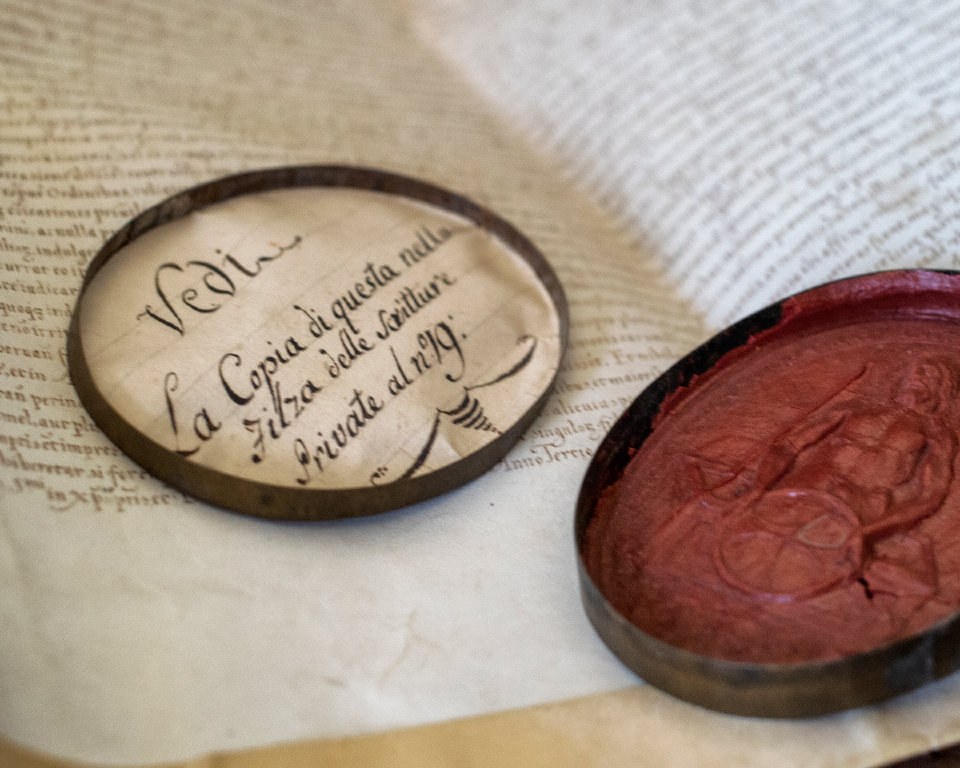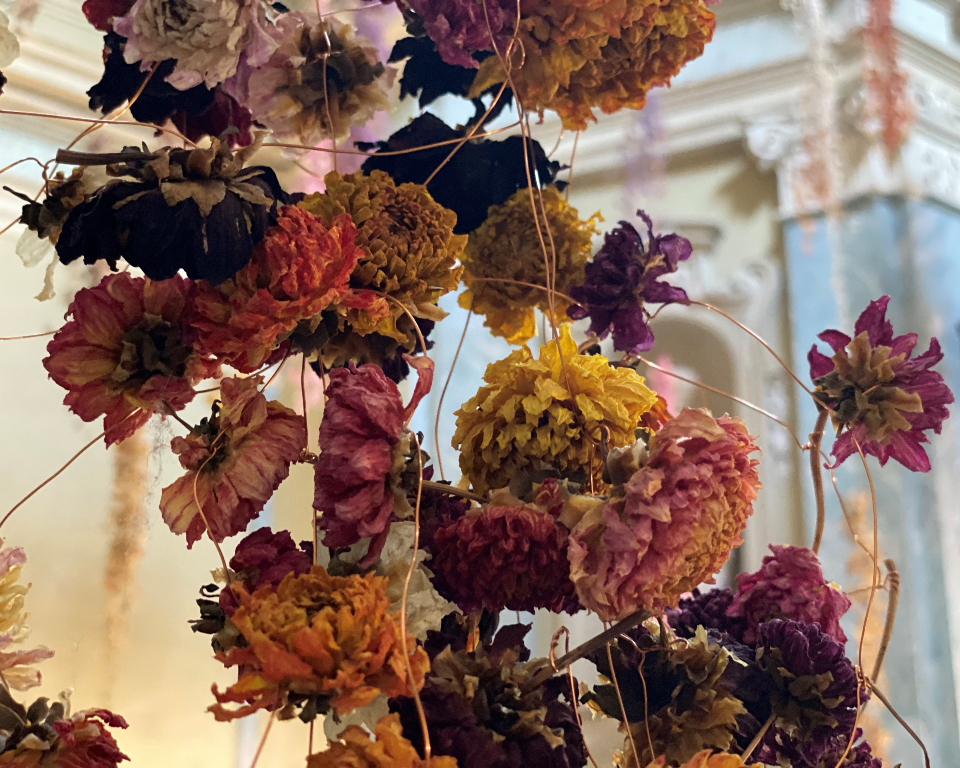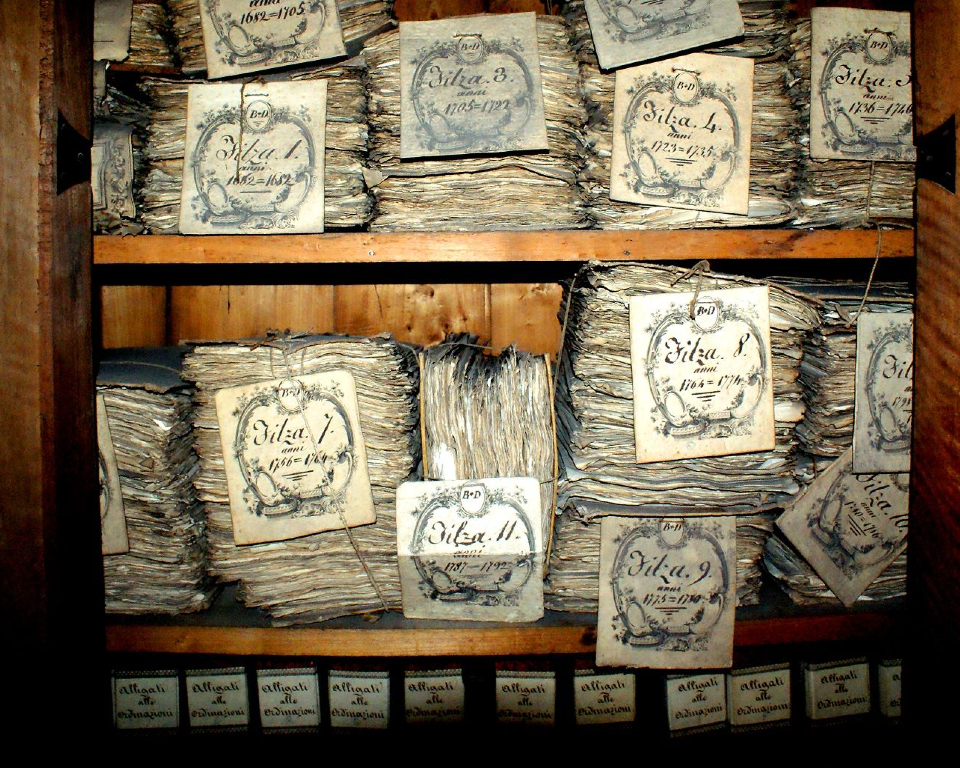In the heart of Parma, a few steps away from the crowded streets of the city centre, there is a place that is still little known but very fascinating, where time seems to have stood still: the Antique Pharmacy of San Filippo Neri, a galenical laboratory dating back to 1789 where, among the dark wooden shelves, ancient instruments, glassware and jars, one can retrace the development of pharmaceutical care and pharmacy from the 17th to the 20th century. Immersed in the silence that smells of medicinal plants and dust, the curious eyes rest on the chemical instruments and elegant bottles, investigating the substances and ancient preparations that were never sold, but only given as gifts to the poor treated by the doctors of the Congregation of Charity.
Guided tour guaranteed with a minimum of 2 people.
A visit to the San Filippo Neri Antique Pharmacy and to the Archives of the Charity's Congregation means retracing the history of medicine and healthcare, questioning the relationship of man with nature and of man with society,... more
A visit to the San Filippo Neri Antique Pharmacy and to the Archives of the Charity's Congregation means retracing the history of medicine and healthcare, questioning the relationship of man with nature and of man with society, a relationship mediated by technology, science, culture and the mind-set of each era.
Hardly known due to its inaccessibility for more than half a century, the San Tiburzio Oratory has only recently been recovered and made open to visitors. The structure has its roots in a pre-Christian era when, in the area where the Oratory now stands, there was a pagan temple dedicated to Mars or Juno on which the first Christian church in Parma would later be erected. The current building, with its small and elegant structure, fascinates with its sinuous lines and skilful use of stucco and never ceases to amaze, a treasure trove of stories and adventurous events.
lessGuided tour of the San Filippo Neri Antique Pharmacy, the Archives of the Charity's Congregation and the San Tiburzio Oratory.
Every day at 11 a.m. at 3 p.m. and at 5 p.m.
San Filippo Neri Antique Pharmacy,
Vicolo San Tiburzio, 5 - 43121 Parma PR
By car:
Parma is served by the A1 Milan-Bologna motorway and the A15 Parma-La Spezia motorway. The SS 9 Via Emilia runs through the entire city centre from east to west, while the SS 62 della Cisa runs south.
By train:
The Parma railway Station is located in the northern part of the city near what is known as Barriera Garibaldi, one of the ancient city gates. It connects the city to the most important national railway routes: the most frequent direct lines of regional and high-speed trains connect Parma to Bologna and Milan, the main exchange stations for other Italian cities and also for the main airports.

More than 400,000 unpublished documents ranging from the 13th to the early 20th century that tell the story of the city of Parma in backlighting are the heritage preserved in the Archive of the Congregation of Charity. In addition to recipe books, inventories, expense notes and notebooks recording the daily preparations delivered to the city's sick poor, the Archive contains papal bulls, diplomas, testamentary legacies, reports, exchanges, lease contracts, letters, maps and numerous registers, those of the 'affiliates', the 'shameful poor', 'spinsters', 'doctors and surgeons', which alongside the regulations contain all the resolutions concerning the activities of the health staff. Among the documents preserved in the Archives we find the 'transitional states-general', comparable to today's budgets, the pleas of families in difficulty, letters from starving, unemployed, war-stricken and lonely, homeless, orphans, sick people, and the proclamations containing the rules to be followed to eradicate cholera epidemics: an incredible collection of documents that preserve the memory of a thousand and one histories.

A unique, immersive and unforgettable experience. Rebecca Louise Law's first solo exhibition in Italy, opened on the occasion of Parma Italian Capital of Culture 2020. The British artist is known for her larger-than-life floral installations and site-specific sculptures conceived and realised to evolve during the period of their exhibition following the course dictated by nature and time. Rebecca Louise Law's artistic research is driven by her knowledge of the natural world, particularly the floral world, in which the artist recognises an infinite vital essence. The desire to preserve life is deeply embodied in her work, which leads to the emergence of new questions about the meaning of living and the very act of preserving evoked by the title Florilegium. Of great importance is the element of chorality: the single flower is picked to become part of a new cluster. Florilegium addresses increasingly urgent issues of our time, such as environmental sustainability and the relationship between man and nature, involving the viewer in an appeal for sustainability. An installation conceived specifically for the central space of the San Tiburzio Oratory, composed of 200 thousand flowers, as many as the citizens of Parma, a strong message of inclusion and a wish for rebirth.

In the early 16th century the Observant Friar Minor Father Francesco da Meda founded the 'Congregation of Charity' with the aim of providing material and spiritual assistance to the needy of the city of Parma. Composed of half laymen and half priests, the Congregation of Charity had its headquarters in San Rocco, then, from 1565, in a dwelling at the Oratory of the Discipline in Porta Nuova before finding its definitive home in Vicolo San Tiburzio in 1588. Here, in 1673, a small Oratory was erected dedicated to St. Philip Neri, chosen as the patron saint immediately after his canonisation and, from 1652, a Spezieria was also built. The Congregation of Charity of Parma provided relief to the weaker segments of the population: orphans, prisoners, unmarried girls, former prostitutes and nobles who had fallen into ruin, offering home healthcare and medicines free of charge to the city's sick poor. This type of assistance continued uninterruptedly until the birth of the National Health Service in the second half of the 20th century, by which time the Congregation of Charity, which had become a public body, had turned its activities mainly to assisting the elderly, changing its name to 'Iraia' and later to 'Asp Ad Personam'. The Antica Farmacia San Filippo Neri, built and refurbished as we see it today, functioned as a galenical laboratory for 177 years. The space of the Antica Farmacia is now part of the Azienda Servizi alla Persona of the Municipality of Parma, heir institution of this rich tradition.